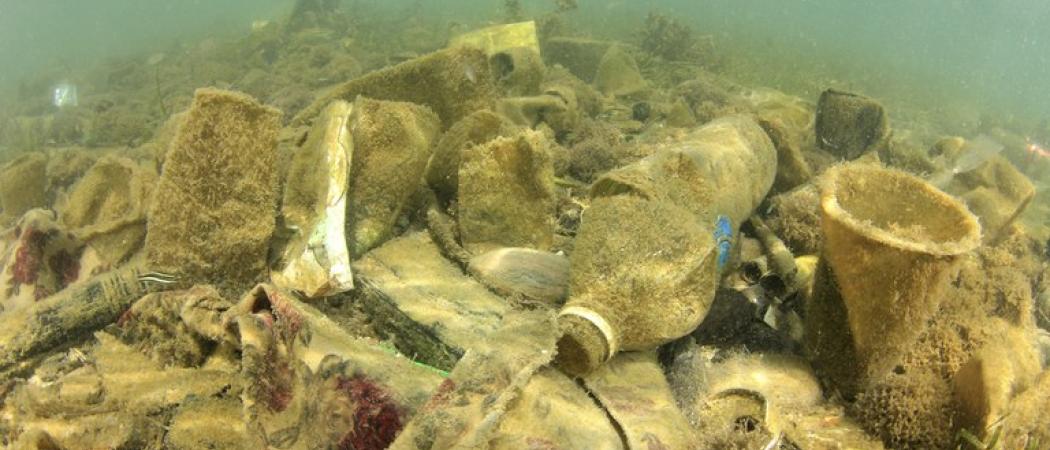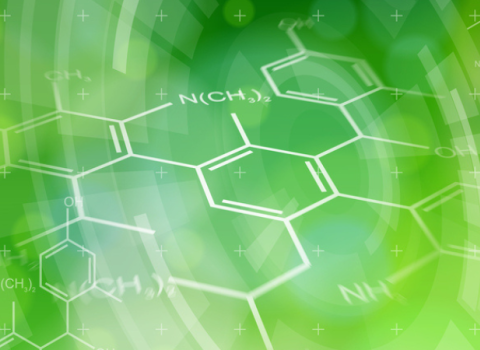
Just like larger pieces of plastic, microplastics end up on the bottom of the seas and oceans. The biofilms that ‘colonise’ them make them heavier, causing them to sink. © Shutterstock
What is the impact of weathering processes on microplastics, and how do the particles spread across seas and oceans? Computer models developed by hydraulics engineers from KU Leuven may help to find the answers.
Through rivers and wastewater, enormous amounts of minuscule plastic particles end up in our seas and oceans. These microplastics – particles under 5 millimetres in size – originate when larger pieces of plastic degrade as a result of weathering processes, or they are added to shower gels and other consumer products. How much of this plastic has already ended up in the seas and oceans, and where? We’re not quite sure.
“The hotspots where plastic floats together or washes up are not representative. A far greater amount of plastic is ‘missing’: we don’t find as much as we’d expect based on our estimates of plastic production and pollution moving from the source to the oceans,” Erik Toorman explains.
Together with a couple of KU Leuven colleagues – all of them hydraulics engineers – he’s part of the European multidisciplinary research project WHEATHER-MIC. This project aims to map the impact of weathering processes on microplastics and how the particles spread across the Baltic Sea.
Built to last
“Weathering processes cause microplastics to discolour, crack, and eventually fall apart into even smaller particles. We’re not entirely sure yet how long these processes take.” But the results of the research project suggest that it’s a very slow process: “We’ve been running experiments in the past three years to study how quickly plastic degrades under the influence of various factors, including UV light, temperature, and bacteria. Three years into these experiments, we see that the plastic has barely changed in terms of size, density, and so on. Small, structural changes only appear on the surface.”
“It will take a lot of further research to understand this weathering process, especially if you want to unravel it for each type of plastic. In any case, plastic does what it was made for: it’s built to last.”
On the bottom of the ocean
The word ‘plastic soup’ conjures up images of debris floating on the surface of seas and oceans. This image needs readjusting, according to Erik Toorman. “You’d expect plastics with a low density to float on the surface because it’s light material. But you also find plastics on the bottom of the ocean, and in much larger quantities than at the surface.”
“This is due to biofilms that originate when algae and bacteria build colonies on plastic, which in turn attract other lifeforms. You can compare it to rocks that mussels attach themselves to. The living organisms on the biofilms, in turn, produce sticky biopolymers, allowing the microplastics to form flocs together with other suspended material. All this adds to the weight of microplastics and thus cause them to sink.”
You can also find low-density plastics on the bottom of the ocean, and in much larger quantities than at the surface.
- Hydraulics engineer Erik Toorman
Microplastics also end up in the food chain: as individual particles, they are eaten by plankton; as part of larger flocs, they are fish food. “Most of these microplastics are excreted again. The droppings, containing microplastics, end up on the bottom of the sea as well.”
Calculating amounts and movement
Surprisingly, the hydraulics engineers can also apply their knowledge about sediment transport – a typical problem for harbours and channels – to microplastics.
“We’ve adapted the computer models we use to calculate sedimentation for use on microplastics. The models can take into account the type, shape, and size of the piece of plastic, the biofilms, and the salt content and the temperature of the water. Some plastic particles seem to flutter down like autumn leaves – although they follow the general laws of physics for falling objects – and they sink. Knowledge of fluid dynamics allows you to predict that process.”
However, the models can only approximate reality: “Flexible fibres, including those from clothing, may behave differently because they don’t retain their shape but rather curl up and down as they sink. These particles are mainly dragged along by turbulence. The smaller and lighter a particle, the greater is the importance of turbulent motion. However, this is also the most difficult process to describe. Models can always be improved.”
We need more information about nanoplastics and the potentially toxic added substances that are released as a result of weathering processes.
The same goes for the methods to measure the amount of microplastics in the ocean. “Researchers go to one of the hotspots to collect one litre of water or to dig out one square metre and examine what’s in it. That method is extremely time-consuming, and the researchers rarely register the type of plastic involved, or how heavy and how large all these bits and pieces are.”
“In the future, we want to offer a quick estimate of how much plastic is on the surface of the water, using remote sensing techniques – in this case, footage from the sky. Particularly promising are drones with special sensors that can distinguish between various materials.”
Health risks
What about the health risks of microplastics that end up in the food chain? “Ecotoxicological experiments – in our research project and many others – have shown that, at least in this respect, the plastic particles cause less damage than expected: the percentage of deaths caused by plastic in animals is small compared to other causes of death.”
“An example: when you put zooplankton in a bowl of water with an unnaturally high dose of microplastics, an ingested plastic particle can, of course, obstruct the intestinal tract. However, the animals themselves suffer relatively little from it. Previous research had already found cases of ‘mechanical’ problems in other animals – fish with partially blocked gills, for instance – but intoxication has not yet been established with certainty. We also need more information about even smaller particles: nanoplastics and the potentially toxic added substances that are released as a result of weathering processes.”
These days, governments are under pressure to take measures quickly – more quickly than science can give answers.
A while ago, a dead dolphin washed up on a Philippine shore with a staggering 40 kilos of plastic in its stomach. Isn’t the cause of death obvious in that case? “You can’t simply compare dolphins and macroplastics with zooplankton and microplastics. If a dolphin hunts near plastic soup, he may think it’s a school of fish and take a couple of bites. Plankton will never encounter such high concentrations of microplastics.”
Heavy metals
Toorman doesn’t want to minimise the problem, but he also warns against panic measures. “Microplastics obviously don’t belong in the bodies of human beings and animals: we must ensure that plastic doesn’t end up in nature, and we must recycle. But these days, governments are under pressure to take measures quickly – more quickly than science can give answers."
The engineer is also disappointed to see microplastics pollution divert attention away from other forms of pollution. “The concentrations of heavy metals and PCBs found in sediment are much more alarming. We must not lose sight of the bigger issues.”
Click here for more information about the WEATHER-MIC project.
This article was first published 8 April by KU Leuven.





 A unique international forum for public research organisations and companies to connect their external engagement with strategic interests around their R&D system.
A unique international forum for public research organisations and companies to connect their external engagement with strategic interests around their R&D system.